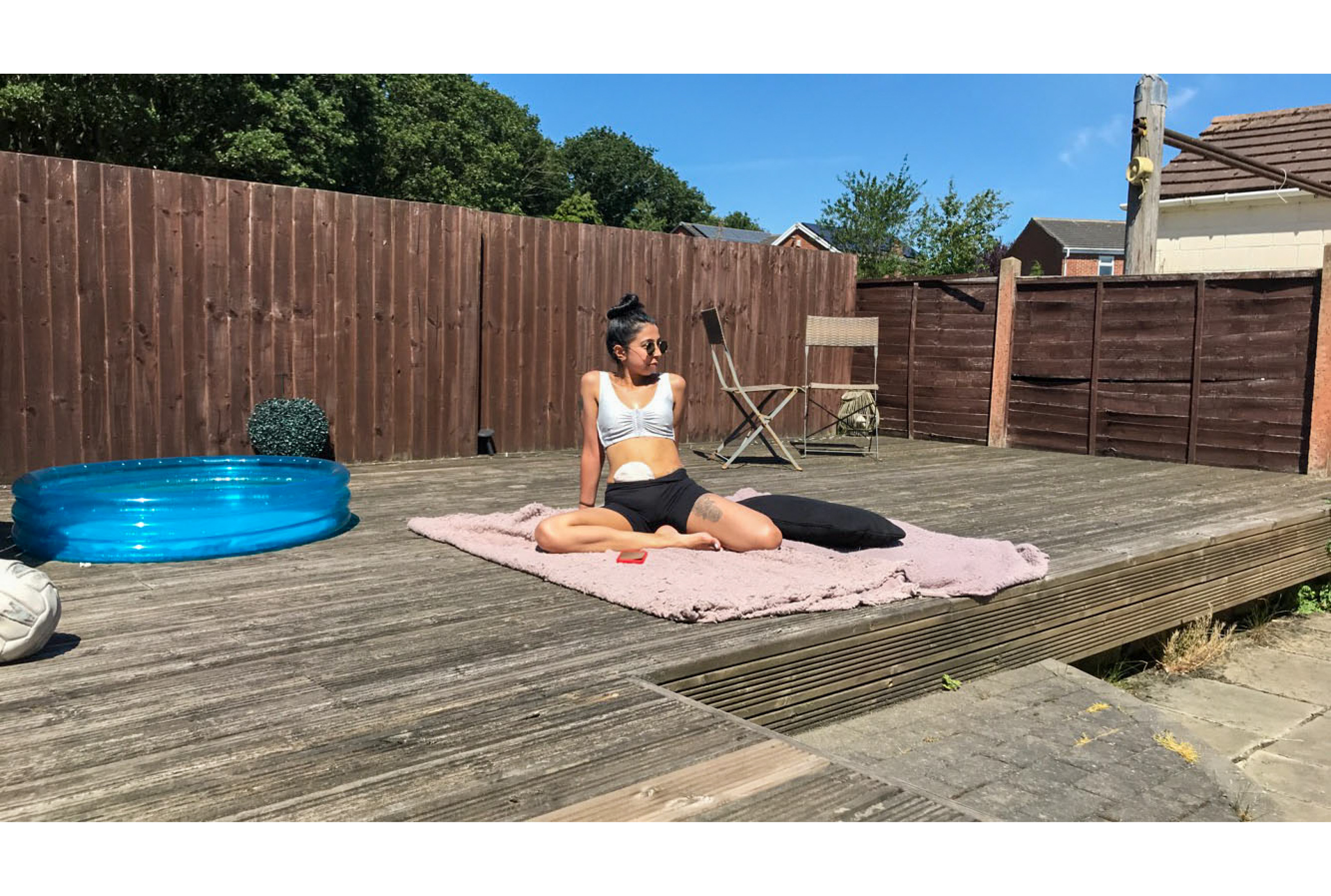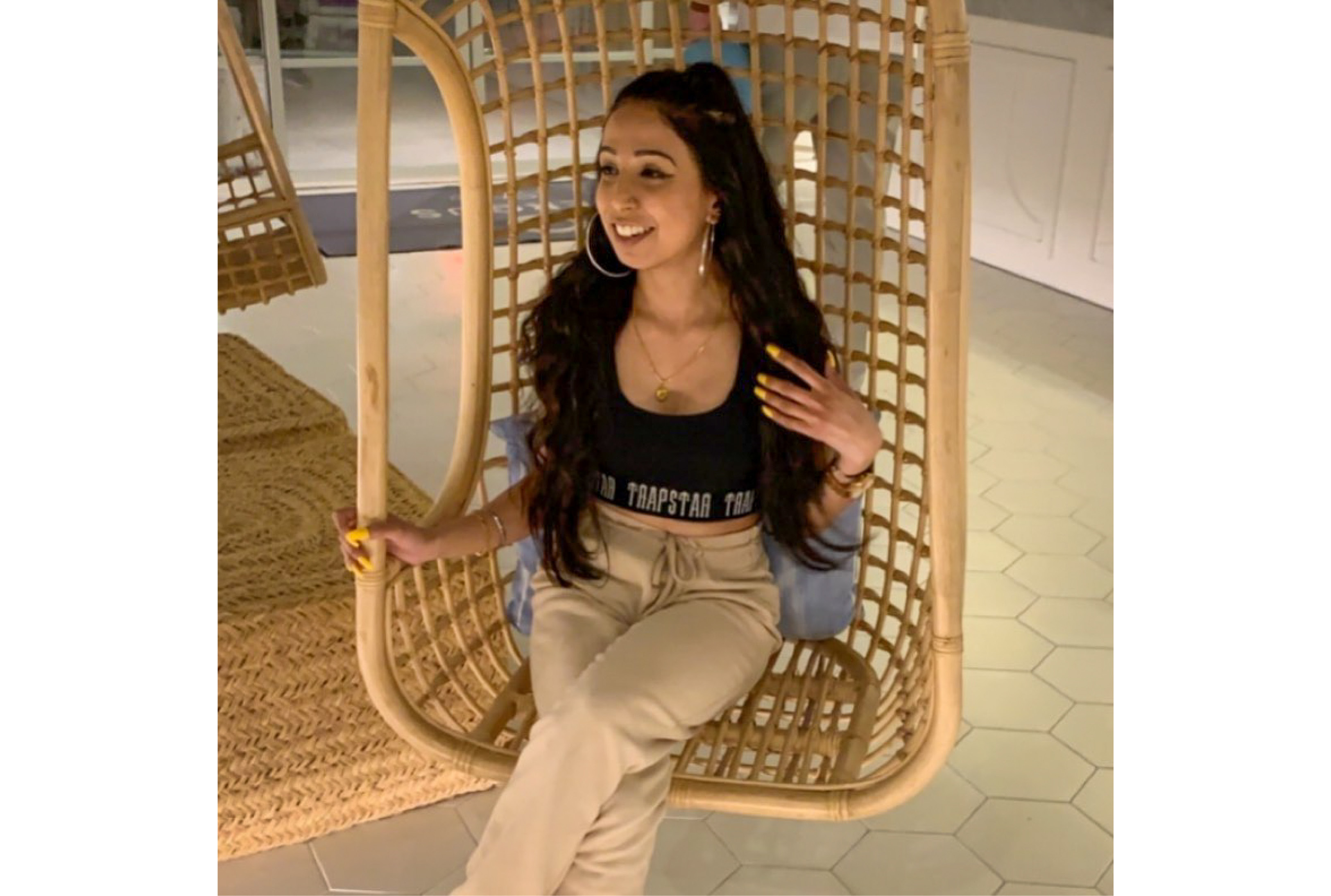I’ve had Crohn’s disease for more than half of my life now. I started getting bowel symptoms when I was 9 years old in 2005. I spent 2 years going from pillar to post trying to get someone to understand – I was finally diagnosed with Crohn’s when I was 11 years old.
By that point I was so ill that I weighed around 23kg; I was skin and bones. Getting a diagnosis wasn’t easy; I had to be transferred to a different hospital for a colonoscopy and biopsies before Crohn’s disease could be confirmed.
Elemental
From when I was diagnosed, I was tried on several different treatments. This made it difficult to attend school, but when I was having treatment as an outpatient, I would be homeschooled via a tutor. Whenever I flared, the go-to treatments were always steroids, and an elemental diet.
My body decided it was very responsive to steroids, but taking them at such a young age was confusing, to say the least. Once they kicked in, I felt on top of the world, but dealing with the side effects was very destructive, both mentally and emotionally. Not only did I get the common ‘moon face’, but the extensive use of steroids also stunted my growth and gave me excessive hair growth, everywhere. Worst of all, the steroids increased my appetite, which was extremely difficult when combined with an elemental diet.
‘I was skin and bones’
An elemental diet involves receiving the nutrition your body needs in the simplest liquid form possible. For me, this was delivered with a nasogastric tube, which runs through the nose and straight into the stomach. Meanwhile, I ate or drank nothing orally except water, Sprite and Fox’s glacier mints. I had to have these countless times throughout my childhood, for a minimum of 8 weeks at a time.
While the elemental diet did give my bowel a good rest, I dreaded this treatment. When I was on steroids at the same time, not being able to eat was torture. I used to watch cooking programmes, look at recipes and secretly pretend what I would choose from the hospital menu.
Surgical
Unfortunately, these treatments weren’t enough, and I was sent for small bowel resections twice, at ages 13 and 15. These operations involved removing parts of my small bowel and then rejoining the ends, so food could still pass through a (now shorter) bowel without me needing a permanent stoma.
I was so underweight that, to be strong enough for surgery, I had to have nutrition delivered straight into my bloodstream (known in the business as total parenteral nutrition (TPN) with a peripherally inserted central catheter (PICC) line). Sometimes I didn’t put on enough weight for surgeons to be happy to operate, but the severity of the disease meant that they chose to continue with the procedure.
After my first resection, someone said to me ‘It’s all up from here’! Little did I know that it was going to be a long way up, with several bumps along the way.
Biological
When I was 15, the decision was made to start trying to treat me with biological medicines (or biologics), a class of medicines made from living organisms. There are a few different biologics used in inflammatory bowel disease (IBD) (Crohn’s disease and ulcerative colitis), and reactions to each of them vary considerably, person to person. A biologic may get one person’s disease completely under control and do absolutely nothing for someone else, or even cause them to have an allergic reaction or side effect. Therefore, biologics must be carefully trialled and monitored by a team of specialists.
First, I tried infliximab, and it was amazing, until I twice had allergic reactions. I then trialled adalimumab, but I was unresponsive, and my Crohn’s disease remained aggressive. Next came an experimental biologic called certolizimab, which needed to be signed off by a panel for me to have as a Crohn’s treatment. Unfortunately, I was unresponsive to this as well. Worse still, it seemed to cause me psoriasis, and by this time I had developed awful vulval and peri-anal Crohn’s. This was truly my worst point. I was then offered to wait and try the new biologic called ustekinumab.
Panic
Throughout my entire teenage years, things were tough. I thought that things would get better after surgery, but it appeared the Crohn’s was determined to keep getting the better of me, and at times it did.
After reacting to infliximab, I developed severe anxiety; I started convincing myself I’d have allergic reactions to anything, even though I have no common allergies (such as to peanuts, dairy and eggs). Panic attacks came out of nowhere, and there was a period when I couldn’t leave my house. The house and the hospital became my safe places. Even now I still have some anxiety. I still don’t eat any kind of nuts, and whenever I am away from home, I have to check how long it takes to get to the nearest hospital in case of a reaction or emergency.
This fear has impacted my ability to try new treatments with confidence. For example, I took injections that were to be taken at home at the hospital day clinic instead, and I would stay there for about 20–30 minutes after to ensure I’d be in the best place if a reaction did occur.
‘I fought so hard’
Radical
Up to this point, I knew that I had the option of having a stoma, but I really did not want one. I fought so hard against it, as I had done for years. I had so much life ahead of me, and, as much as consultants told me that it would improve my quality of life, all I could think was that I could beat it.
As I was deciding whether to try this fourth drug, I learned that the Crohn’s inflammation had spread to the whole of my colon, known as Crohn’s colitis. Not only this, but my colon also had a Clostridioides difficile bacterial infection. At this point, I felt that it was the end to end all endings. I was so ill that I had no more fight left. I cried for surgery, and I cried for a stoma. I just wanted it all to end.
The surgeons came in, sat down at the end of my bed and told me that it would not be a small operation. I would have to have a panproctocoletcomy, which would mean removing all of my colon and the whole of my rectum. They warned me that weighing only 28kg meant I’d have a difficult recovery. What’s more, they also cautioned that, in the future, I may struggle to conceive children and would most likely would have to go through in-vitro fertilisation (IVF) to get pregnant. Just what every 19-year-old wants to hear, right?
Fast forward
Despite all this, I agreed to go for surgery. Fast forward 6 years, and I am so happy to say that my Crohn’s has been in remission for the entire time. I am able to eat without pain, go out without having to worry about where the nearest toilet is or needing to rush home. For the first time, I’ve been able to hold down a full time job and enjoy working.
I’ve also been able to travel and enjoy going on holiday without having to pack a huge supply of medication. I truly feel great, and I am forever grateful to my IBD team and the surgeons who operated on me.
‘I felt on top of the world’
I have had a few small issues, such as short bowel syndrome, a fair bit of scarring and tissue and an endometrioma cyst. However, all I need to do is take Dioralyte to regularly replace the salts I don’t otherwise receive properly, as well as loperamide when needed.
I have a blog (crohnsandmore.com), which I use, along with Twitter and Instagram, to advocate for Crohn’s disease and mental health. I have also recently co-founded a platform with three other women called IBDesis, which advocates IBD for the South Asian community and can be found on all social media platforms.
Having a stoma has been the best thing to happen to me. Before, I struggled to see how it would improve my life, but I now realise that the life I had before wasn’t much of a life. What I have now, that is a life.
‘I truly feel great’

Suraksha has her life back
 Suraksha has been in remission since surgery
Suraksha has been in remission since surgery
Surakhsha Soond is a blogger and advocate for Crohn’s disease and mental health issues
Email crohnsandmore@gmail.com
Twitter @surakhshasoond
Instagram @surakhshasoond

